CASE 91 Hema N. Choudur, Anthony G. Ryan, and Peter L. Munk Two patients presented with an inability to bear weight and pain, with swelling along the lateral aspect of the foot. The child (case 1) had had a skiing injury a few weeks prior to his presentation, and the adult, a 52-year-old amateur tennis player (case 2), presented having sustained an inversion injury during a game. Figure 91A Figure 91B Figure 91C Anteroposterior (AP), oblique, and lateral views of the foot (Figs. 91A–91C) show an undisplaced fracture through the base of the fifth metatarsal adjacent to the apophyseal growth plate. Figure 91E Figure 91F AP, oblique, and lateral views of the foot (Figs. 91D–91F) show a transverse fracture of the proximal shaft of the fifth metatarsal. Proximal fifth metatarsal fractures, as follows: Normal variants include the following: Classical Jones fractures are common injuries causing pain during weight bearing. Unlike fractures caused by avulsion of the peroneus brevis tendon (pseudo-Jones, tennis, and dancer’s fractures), true Jones fractures are due to a twisting inversion injury of the foot. However, all proximal fifth metatarsal fractures may look alike, and differentiating them is critical in initiating the correct management. Jones fractures are usually seen in athletes secondary to an inversion mechanism on the ankle or hindfoot. The more frequent avulsion injuries (dancer’s fractures) occur without a twisting injury. In the past, these avulsions were thought to be associated with tearing at the peroneus brevis tendon insertion, but it is more likely that the injury occurs secondary to avulsion of the plantar aponeurosis. Jones fractures occur when the ankle is plantar flexed and a strong adduction force is applied to the forefoot, as may occur in soccer, football, tennis, and other sports. Because of relatively poor vascularity and highly repetitive stresses at this site, Jones fractures are associated with a poor outcome.
Base of Fifth Metatarsal Fracture
Clinical Presentation
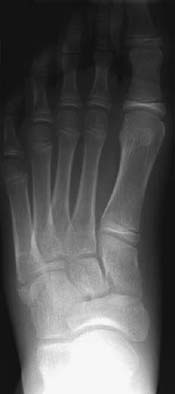
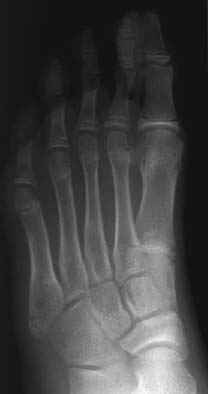
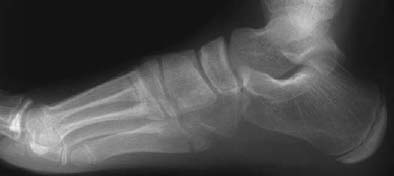
Radiologic Findings
CASE 1

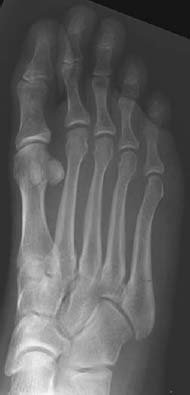
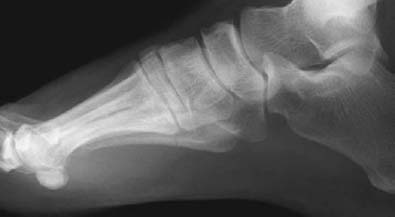
CASE 2
Diagnosis
Differential Diagnosis
Discussion
Etiology
Pathophysiology
Stay updated, free articles. Join our Telegram channel

Full access? Get Clinical Tree


